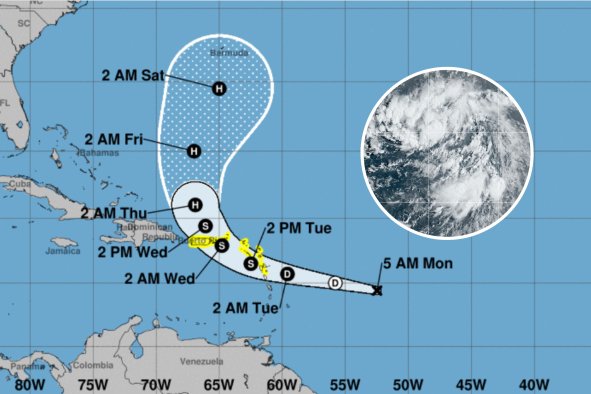COVID-19 activity has seen a surge in recent weeks as some 27 states have detected "very high levels" of COVID-19 in their wastewater, according to data from the U.S. Centers for Disease Control and Prevention (CDC).
The figure, which is for the week ending August 5, is up from the previous week, when 20 states reported "very high" levels, and nearly four times the levels detected for the week ending July 15.
Some areas have been more affected than others, with the highest levels seen in the Western states, followed closely by the South. The data can be seen in the chart below.
A rise in virus wastewater levels like this is often an indicator that more people are getting infected, which aligns with the gradual increase seen in positive testing in recent weeks. As of August 5, 17.6 percent of all COVID tests conducted in the United States (excluding at-home testing) have come out positive.
The ongoing summer wave of COVID infections has largely been led by a new class of variants, nicknamed FLiRT because of the positions of the mutations in the projections on their surface that allow them to enter into cells. These projections, known as spike proteins, are also used as targets by immune systems and vaccinations, so changes in their structure can allow the virus to bypass the body's defenses more easily.
As of August 3, the now-dominant coronavirus subvariant, KP.3.1.1, accounts for more than 1 in 4 U.S. COVID-19 cases, according to the CDC, with the FLiRT variants accounting for 75 percent of cases in total.
However, while the CDC has reported a steady increase in infections across the U.S. in recent weeks, hospitalizations remain relatively low. From what we have seen so far, the new FLiRT variants, while more infectious, do not generally cause severe symptoms.
Symptoms are the same as previous versions of the virus, with milder expression in most cases, according to the Johns Hopkins Bloomberg School of Public Health.
As listed by the CDC, the symptoms include the following:
- Fever or chills
- Cough
- Shortness of breath
- Fatigue
- Muscle or body aches
- Headache
- Loss of taste or smell
- Sore throat
- Runny nose
- Nausea or vomiting
- Diarrhea
However, more vulnerable individuals may be at risk of severe illness, so it is important to self-isolate if you receive a positive COVID test.
Is there a health problem that's worrying you? Let us know via health@newsweek.com. We can ask experts for advice, and your story could be featured in Newsweek.
Disclaimer: The copyright of this article belongs to the original author. Reposting this article is solely for the purpose of information dissemination and does not constitute any investment advice. If there is any infringement, please contact us immediately. We will make corrections or deletions as necessary. Thank you.



